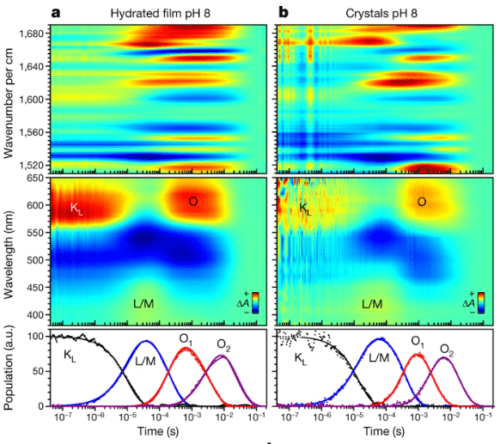For the first time, the process that triggers a nerve impulse in living cells was recorded in real time. The groundbreaking research was recently published in the prestigious journal "NATURE", a research effort that required a wide range of experts in crystallography and spectroscopy from leading universities in the world, including Prof. Igor Shapiro from the Hebrew University

About 99 percent of the human body is made up of the six most common atoms on Earth. The sixth of them, sodium, which also makes up table salt (sodium chloride), is responsible for the driving force that breathes life into humans and many other creatures. The sodium triggers nerve impulses (electrical pulses) in the nerve cells as a result of changes in its concentration around the outer membrane (membrane) of the cell. These electrical currents allow the human body to communicate with its organs, sense the world around it, and also think and create new things in the human body. The process that triggers the neural electrical pulse is known and known to science from previous studies, in which they discovered that there are unique proteins responsible for moving the sodium ions through "channels" located in the cell membrane, thus creating an electrical voltage. Despite this, it was not clear to the researchers exactly how the process of the sodium passage occurs, because the process itself has never been recorded spatially and in real time.
In the new study, the researchers developed an original and unique approach to observe the important process, and for this purpose they used a molecule that emits X-ray radiation (X-rays) when irradiated with laser pulses. With each pulse of the laser, the X-ray emitted from the molecule allows a "photograph" of the spatial structure of the cell at that moment. With the help of this method, the researchers were able to compile from the images obtained a kind of "video" that demonstrates for the first time the exact mechanism that creates the electrical impulse in nerve cells. The unique photography required the scientists to overcome a variety of experimental and computational difficulties, therefore it was necessary to integrate a wide range of experts from the field of crystallography and spectroscopy, as well as experts from the field of computer simulation of quantum chemical processes under the leadership of Prof. Igor Shapiro from the Institute of Chemistry at the Hebrew University. The study was published a few days ago in the prestigious scientific journal "Nature".
The new study is groundbreaking in many ways because in previous studies (such as the study carried out by a Japanese group from the University of Tokyo), the process in question was only observed statically, i.e. they recorded the spatial structure of the protein channel with the sodium, but did not observe the actual process and its progress as a function of time. Here it is worth noting that understanding the detailed process of the passage of sodium is very important not only from a scientific point of view but also from a medical and applied point of view, as it may help in the development and improvement of a wide variety of neurological drugs, the action and effectiveness of which is critically affected by defects in the sodium channels and the balance of the exact concentrations of the surrounding sodium to the cell
Prof. Yehoyakim Habarla from the Free University of Berlin, an expert in biological chemistry and one of the authors of the article: "This experiment fulfilled a long-standing dream in the scientific community. Thanks to the fruitful collaboration of the research groups from Jerusalem, Switzerland and our group from Germany, we were able to demonstrate for the first time the process in real time, on different time scales, down to the atomic level. This is amazing!" Prof. Igor Shapiro added that "the computational knowledge in this field was critical in deciphering the information obtained from the experiments. From the experimental data obtained, it is very easy to get confused between the water molecule and the sodium. Therefore, in-depth knowledge, a lot of experience and a correct and high-quality analysis of the results of the experiment are required. To overcome these difficulties we used tools from the field of computer simulation of chemical processes".

3 תגובות
fresh man etc
This is a site that presents science using the anthroposophical method.
Yes! but,
How is it that soup from a well!
becomes to;
Texture of consciousness?!
Research that is
As the pinnacle of scientific progress in all fields of science, physics, chemistry, biology, in the most advanced fields used in research.
to the discovery that is the most fundamental to the existence of a living cell, and the relationship between the cells in every multicellular creature. In fact, life itself.